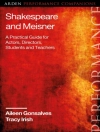Cesare Pugni was born in Genoa on 31 May 1802, and studied in Milan from 1815 to 1822, with Antonio Rollo and Bonifazio Asioli. He became a cymbalist in the theatre orchestra, and on the death of Vincenzo Lavigna, was appointed musical director. He later moved to Paris where he became director of the Paganini Institute and met the great choreographers of the time. He started an artistic collaboration that was to prove one of the most productive in the history of ballet-working closely with Jules Perrot (1810-1892), first in Paris, then in London. Here Pugni presented some of the most renowned ballets of the 19th century, such as Esmeralda (1844) and the Pas de Quatre (1845), which still find their place in some modern repertories. He also worked with Arthur Saint-Leon (1821-1870), Paolo Taglioni (1808-1884), Marius Petipa (1818-1910), and some of the greatest dancers of the century. Pugni followed Perrot to Russia and became official composer of the Imperial theatres in St Petersburg where he composed new ballets, notably Doch’ Faraona (Pharaoh’s Daughter) (1862) and Koniok Gorbunok (The Little Humpbacked Horse) (1862). His most famous collaboration, with Marius Petipa, dominated these years, lasting until the composer’s death on 26 January 1870. Pugni is remarkable for his enormous output of some 300 ballets (either original compositions or in arrangements).Arthur Saint-Leon, famous for Coppelia with Leo Delibes (1870), created The Little Humpbacked Horse to the music of Cesare Pugni for the Imperial Ballet (today the Maryinsky Ballet). The story of Koniok Gorbunok is based on the popular fairy-tale by Petr Yershov (1834), and tells of the spectacular deeds of Ivanushka with the help of the magical Little Humpbacked Horse. The scenario is notable for its humour as well as its fantasy. The ballet is of particular interest as being the first to be based on themes from Russian folklore, a particular interest of Saint-Leon, who chose the subject and the source, and devised the scenario himself. The first performance was on 13 December 1864 at the Imperial Bolshoi Kamenny Theatre in St. Petersburg. The Emperor Alexander II attended the premiere, a great and enduring success. Marius Petipa revived the ballet in 1895 as The Tsar-Maiden for the dancer Pierina Legnani. The work lived on for many years in the repertory of the Imperial Ballet (given in St Petersburg over 200 times), a success continued in Soviet times at the Kirov Ballet, and also the Bolshoi Theatre in Moscow in a version by Alexander Gorsky (1901).Alexander Radunsky choreographed his own version of this ballet to a score by Rodion Shchedrin for the Bolshoi Ballet in 1960, a version of which was filmed with Maya Plisetskaya as the Tsar-Maiden and Vladimir Vasiliev as Ivanushka. In 2009 Alexei Ratmansky choreographed a new version for the Maryinsky Ballet, also using Shchedrin’s score. A reconstruction of Saint-Leon’s original was filmed in 1989 for Russian television with graduates from the Vaganova Academy of Russian Ballet in the lead roles. The film included narrated sections and illustrations from a popular 1964 Russian edition of Yershov’s book.
Robert Ignatius Letellier
Cesare Pugni [PDF ebook]
KONIOK GORBUNOK, ILI TSAR-DEVITSA Le Petit Cheval bossu, ou La Tsar-Demoiselle The Little Humpbacked Horse, or The Tsar-Maiden
Cesare Pugni [PDF ebook]
KONIOK GORBUNOK, ILI TSAR-DEVITSA Le Petit Cheval bossu, ou La Tsar-Demoiselle The Little Humpbacked Horse, or The Tsar-Maiden
购买此电子书可免费获赠一本!
格式 PDF ● 网页 160 ● ISBN 9781443835961 ● 出版者 Cambridge Scholars Publishing ● 发布时间 2011 ● 下载 6 时 ● 货币 EUR ● ID 2611397 ● 复制保护 Adobe DRM
需要具备DRM功能的电子书阅读器












